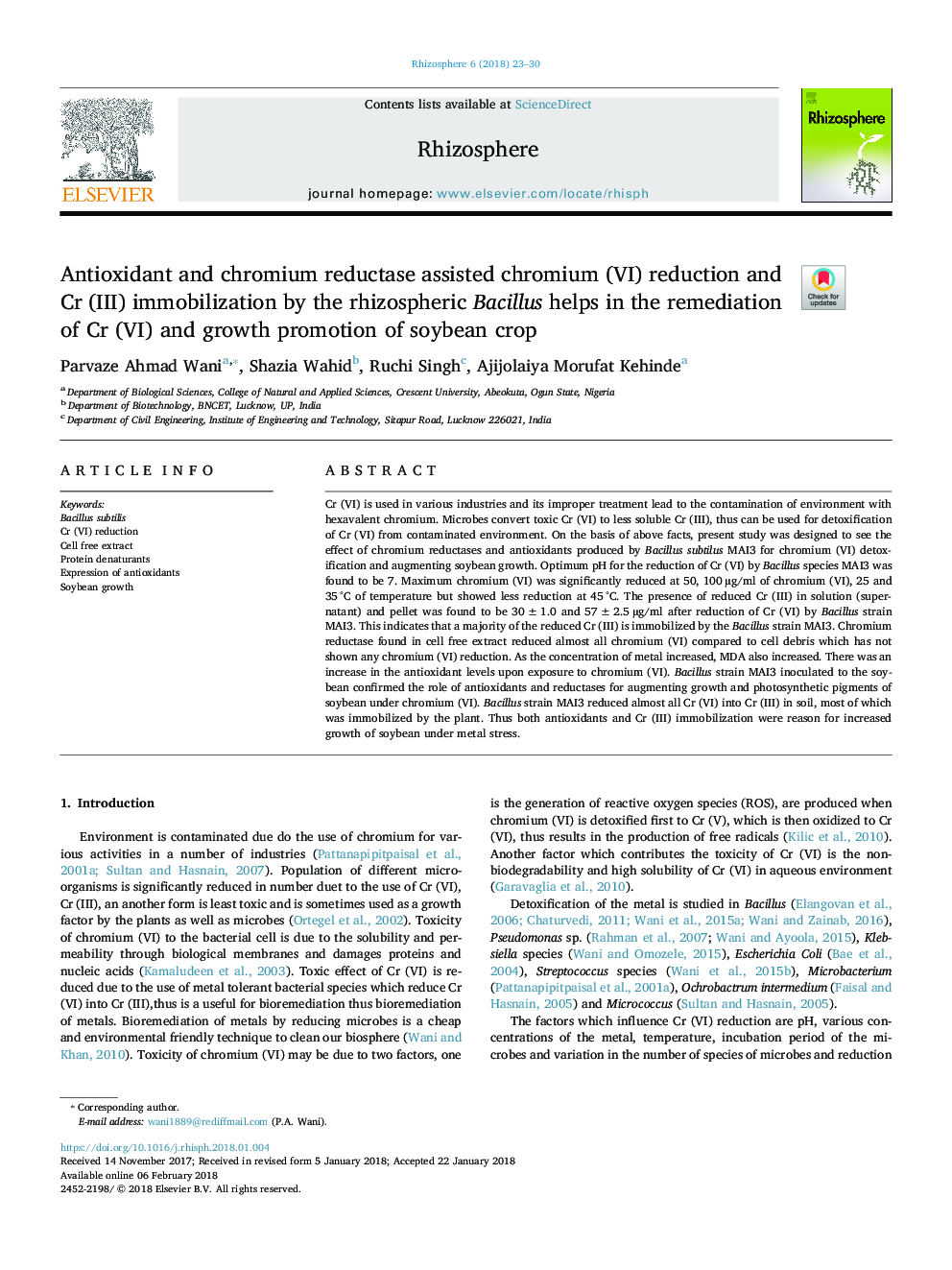| Article ID | Journal | Published Year | Pages | File Type |
|---|---|---|---|---|
| 8882143 | Rhizosphere | 2018 | 8 Pages |
Abstract
Cr (VI) is used in various industries and its improper treatment lead to the contamination of environment with hexavalent chromium. Microbes convert toxic Cr (VI) to less soluble Cr (III), thus can be used for detoxification of Cr (VI) from contaminated environment. On the basis of above facts, present study was designed to see the effect of chromium reductases and antioxidants produced by Bacillus subtilus MAI3 for chromium (VI) detoxification and augmenting soybean growth. Optimum pH for the reduction of Cr (VI) by Bacillus species MAI3 was found to be 7. Maximum chromium (VI) was significantly reduced at 50, 100â¯Âµg/ml of chromium (VI), 25 and 35â¯Â°C of temperature but showed less reduction at 45â¯Â°C. The presence of reduced Cr (III) in solution (supernatant) and pellet was found to be 30 ± 1.0 and 57 ± 2.5â¯Âµg/ml after reduction of Cr (VI) by Bacillus strain MAI3. This indicates that a majority of the reduced Cr (III) is immobilized by the Bacillus strain MAI3. Chromium reductase found in cell free extract reduced almost all chromium (VI) compared to cell debris which has not shown any chromium (VI) reduction. As the concentration of metal increased, MDA also increased. There was an increase in the antioxidant levels upon exposure to chromium (VI). Bacillus strain MAI3 inoculated to the soybean confirmed the role of antioxidants and reductases for augmenting growth and photosynthetic pigments of soybean under chromium (VI). Bacillus strain MAI3 reduced almost all Cr (VI) into Cr (III) in soil, most of which was immobilized by the plant. Thus both antioxidants and Cr (III) immobilization were reason for increased growth of soybean under metal stress.
Related Topics
Life Sciences
Agricultural and Biological Sciences
Agronomy and Crop Science
Authors
Parvaze Ahmad Wani, Shazia Wahid, Ruchi Singh, Ajijolaiya Morufat Kehinde,
